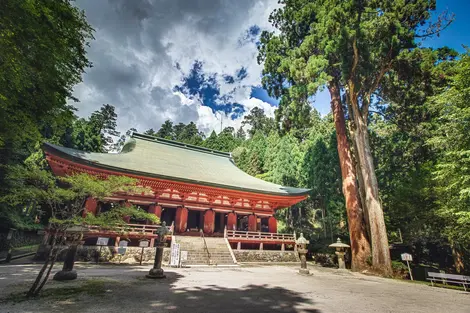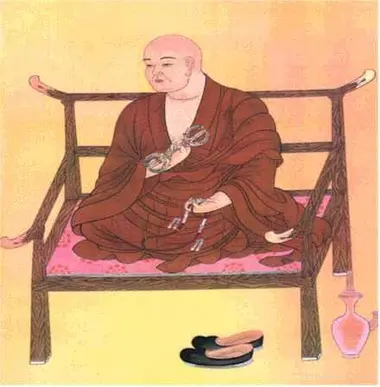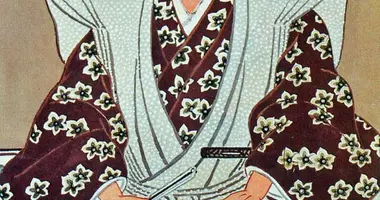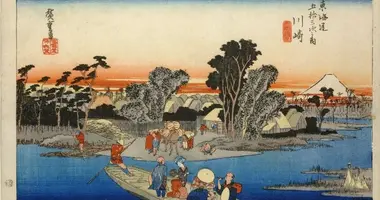The great monks of Japanese history
- Published on : 23/06/2024
- by : S.R.
- Youtube
Buddhism, imported from China and Korea from the 6th century onwards, has had a profound influence on Japanese history. Numerous monks have played a crucial role in its development and influence, becoming emblematic figures who have shaped the country's spirituality, culture and even politics. Let's discover these fascinating figures who have shaped Japanese religious history over the centuries. From philosophers to reformers to warriors, these monks illustrate the richness and diversity of Japanese Buddhism. Their teachings and actions continue to influence contemporary Japanese society.
Kūkai, the founder of Shingon Buddhism
Kūkai (774-835), better known as Kōbō-Daishi, is a major figure in Japanese Buddhism. Founder of the Shingon school, he profoundly influenced Japanese spirituality and culture. After a study trip to China, Kūkai brought the teachings of esoteric Buddhism back to Japan. He founded the temple on Mount Kōya, which remains a major place of pilgrimage to this day.
Kūkai's influence extends far beyond the religious sphere. He was also an eminent man of letters, philosopher, poet and calligrapher. He is credited with inventing the kana syllabary, although this claim is disputed. Kūkai also founded Japan's first folk teaching school and wrote one of the country's first dictionaries. His doctrine of "Sokushin-Jōbutsu" advocated the possibility of becoming Buddha in this life with this body, a revolutionary idea for the time.
Every year, thousands of pilgrims walk the circuit of Shikoku's 88 temples, associated with Kūkai. This pilgrimage, one of the longest and most famous in Japan, testifies to the persistence of his spiritual influence. Kūkai's mausoleum on Mount Koya, a UNESCO World Heritage Site, remains an important place of veneration.
Saichō, the introducer of the Tendai school in Japan
Saichō (767-822), also known posthumously as Grandmaster Dengyō, is the founder of the Tendai school in Japan. A contemporary of Kūkai, he played an equally crucial role in the evolution of Japanese Buddhism. After a stay in China in 804-805, Saichō introduced to Japan the teachings of the Tiantai school, which he adapted to create the Tendai school.
The Tendai school, based on the Lotus Sūtra, quickly became one of the most influential in Japan. Saichō established his school's headquarters on the Hiei, northeast of Kyoto. The Enryaku-ji temple he founded there became a major center of Buddhist studies. The Tendai school is distinguished by its syncretic approach, integrating elements of esoteric Buddhism and meditative practices.
One of Saichō's major contributions was the creation of a new ordination system based on the precepts of the Mahāyāna, independent of the Nara schools. This innovation paved the way for greater autonomy in Japanese Buddhism. Saichō's influence can also be measured by the fact that many founders of later Buddhist schools, such as Hōnen, Shinran, Eisai, Dōgen and Nichiren, all passed through Mount Hiei.
Nichiren, the reforming monk at the origin of a new school of Buddhism
Nichiren (1222-1282) is one of the most influential and controversial Buddhist monks in Japanese history. Founder of the school that bears his name, he advocated a return to what he considered the most authentic teachings of the Buddha, centered on the Lotus Sūtra. His doctrine is characterized by the recitation of the mantra "Nam(u) Myōhō Renge Kyō" as his principal practice.
Nichiren distinguished himself by his critical approach to the other Buddhist schools of his day, which he considered far removed from the true teachings of the Buddha. This position earned him much persecution, including several execution attempts and periods of exile. Despite these trials, or perhaps because of them, Nichiren developed a doctrine that emphasized the possibility of all beings attaining enlightenment in this life.
Nichiren's influence extended far beyond his own time. His school gave rise to several branches, some of which, like the Soka Gakkai, have become important Buddhist movements worldwide. Nichiren's teachings, with their emphasis on social engagement and societal transformation, continue to inspire many practitioners today.
Dōgen, the Zen master and founder of the Sōtō school
Dōgen (1200-1253) is the founder of the Koya Zen school in Japan. After a period of study in China, he introduced the Caodong tradition, which became the Sōtō school in Japan. Dōgen is considered one of Japan's most profound and original Buddhist philosophers.
Dōgen's main contribution to Zen Buddhism lies in his teaching of shikantaza, or "just sitting". This meditation practice, devoid of any specific goal or object, is at the heart of the Sōtō approach to Zen. Dōgen insisted on the idea that practice and awakening are one and the same, challenging the traditional distinction between the means and the end of Buddhist practice.
Dōgen's major work, the Shōbōgenzō ("The Treasury of the True Dharma Eye"), is considered one of the most profound philosophical texts in Japanese Buddhism. In this work, Dōgen develops original thinking on the nature of time, being and Buddhist practice. His influence extends far beyond Buddhism, affecting Japanese philosophy and culture as a whole.
Hōnen and Shinran, the fathers of Pure Land Buddhism
Hōnen (1133-1212) and his disciple Shinran (1173-1263) are the founding figures of Pure Land Buddhism in Japan. Hōnen founded the Jōdo-shū school, while Shinran developed these teachings to create the Jōdo Shinshū school. Their approach revolutionized Buddhist practice in Japan, making it accessible to all.
Hōnen taught the exclusive practice of nembutsu, the recitation of Amida Buddha's name, as a means of attaining rebirth in the Pure Land. This simple, straightforward approach contrasted with the more complex practices of established schools. Shinran took this logic a step further, emphasizing the importance of faith rather than the mechanical repetition of nembutsu.
Shinran's teaching, in particular, had a profound impact on Japanese society. By rejecting the distinction between monks and laypeople and asserting that even ordinary people could achieve enlightenment, he democratized Buddhism. The Jōdo Shinshū became one of the most popular Buddhist schools in Japan, profoundly influencing the country's culture and spirituality.
Warrior monks: the emergence of the sōhei
The sōhei, or warrior-monks, are a unique phenomenon in the history of Japanese Buddhism. First appearing in the middle of the 10th century, they played an important role in political and military conflicts until the end of the 16th century. The sōhei were mainly associated with the great Buddhist temples such as Enryaku-ji on Mount Hiei and Kōfuku-ji in Nara.
The emergence of the sōhei is linked to the rise in political and economic power of the great Buddhist monasteries . These institutions, endowed with vast estates and considerable resources, found themselves embroiled in conflicts with secular power and with each other. Warrior-monks served to protect the interests of their temples and exert political influence.
One of the most famous figures associated with the sōhei is Benkei, the legendary companion of the samurai Minamoto no Yoshitsune. Although widely mythologized, Benkei embodies the ideal of the warrior-monk in the Japanese imagination. The sōhei tradition came to an end with the unification of Japan under Oda Nobunaga, who destroyed the Enryaku-ji complex in 1571 to break the power of the warrior-monks.
Key figures in contemporary Japanese Buddhism
Contemporary Japanese Buddhism has also produced some remarkable figures who have helped adapt the ancient teachings to the modern world. These include:
Nikkyo Niwano (1906-1999), founder of the lay Buddhist movement Risshō Kōsei Kai. He worked for world peace and inter-religious dialogue, notably helping to found the World Conference of Religions for Peace.
Shundo Aoyama (1933-2019), one of the first women to become a Sōtō Zen master. She helped renew the place of women in Japanese Buddhism and wrote numerous books on Zen practice in everyday life.
Taitsu Kōno (1930-2021), former head of the Tendai school, who worked to modernize his school's practices while preserving its spiritual heritage. He was also active in inter-religious dialogue.
These contemporary figures illustrate the vitality and adaptability of Japanese Buddhism in the face of modern challenges. In their own way, they continue the work of the great monks of the past, seeking to make Buddhist teachings relevant to our times.
The legacy of the great monks of Japanese history thus continues to live on, testifying to the richness and diversity of Japanese Buddhism. From Kūkai to the present day, these spiritual figures have profoundly influenced not only religion, but also culture, art and Japanese society as a whole. Their influence remains palpable in contemporary Japan, where Buddhism, despite facing the challenges of secularization, remains an essential component of national identity.



















